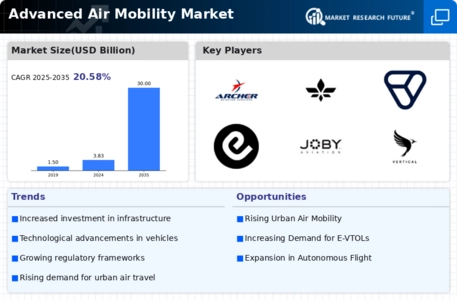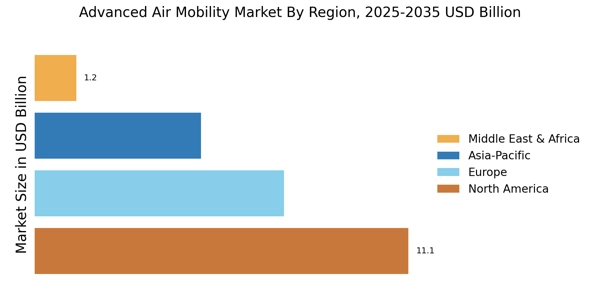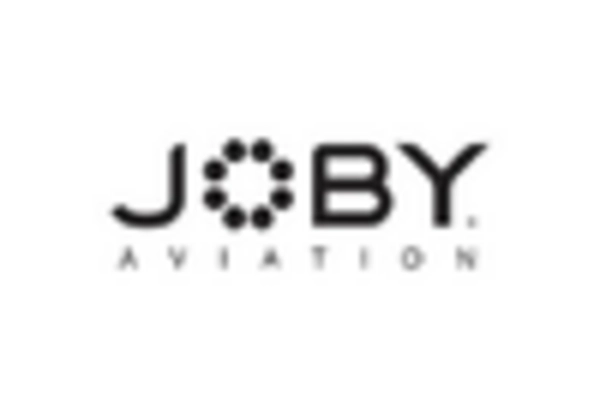Regulatory Frameworks
The establishment of comprehensive regulatory frameworks is crucial for the growth of the Advanced Air Mobility Market. Governments are actively working to create guidelines that ensure safety, airspace integration, and operational standards for new aerial vehicles. The Federal Aviation Administration (FAA) and other regulatory bodies are developing policies that could facilitate the certification of eVTOL aircraft. These regulations may also address air traffic management systems that accommodate increased aerial traffic. As these frameworks become more defined, they are expected to instill confidence among investors and manufacturers, thereby fostering growth in the Advanced Air Mobility Market.
Technological Innovations
The Advanced Air Mobility Market is experiencing a surge in technological innovations that enhance the efficiency and safety of aerial vehicles. Developments in electric propulsion systems, autonomous navigation, and advanced materials are pivotal. For instance, electric vertical takeoff and landing (eVTOL) aircraft are being designed with improved battery technologies, which could potentially increase their range and reduce operational costs. The integration of artificial intelligence in flight operations is also gaining traction, allowing for real-time data analysis and decision-making. As these technologies mature, they are likely to attract investments and partnerships, further propelling the Advanced Air Mobility Market.
Investment and Funding Opportunities
The Advanced Air Mobility Market is witnessing a notable increase in investment and funding opportunities. Venture capital firms and private investors are showing heightened interest in startups and established companies focused on aerial mobility solutions. Reports suggest that funding for eVTOL projects has reached billions of dollars, indicating strong market confidence. This influx of capital is likely to accelerate research and development efforts, leading to faster commercialization of advanced aerial vehicles. As financial backing continues to grow, it may catalyze innovation and expansion within the Advanced Air Mobility Market.
Environmental Sustainability Initiatives
The push for environmental sustainability is becoming a significant driver for the Advanced Air Mobility Market. As concerns about climate change intensify, there is a growing emphasis on reducing carbon emissions in transportation. eVTOL aircraft, which often utilize electric propulsion, are perceived as a cleaner alternative to conventional vehicles. Governments and organizations are increasingly prioritizing investments in sustainable technologies, which could lead to incentives for the development of eco-friendly aerial mobility solutions. This trend suggests that the Advanced Air Mobility Market may align closely with global sustainability goals, potentially enhancing its appeal to consumers and investors alike.
Urbanization and Infrastructure Development
Rapid urbanization is driving the demand for innovative transportation solutions, positioning the Advanced Air Mobility Market as a viable alternative to traditional ground transport. As cities expand, traffic congestion becomes a pressing issue, prompting the need for aerial mobility solutions. The development of vertiports and charging infrastructure is essential to support eVTOL operations. According to recent studies, urban air mobility could reduce travel times significantly, making it an attractive option for commuters. This trend indicates a potential shift in urban planning and transportation policies, which could further enhance the Advanced Air Mobility Market.


















Leave a Comment